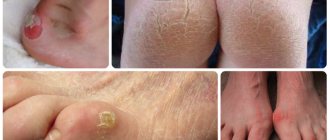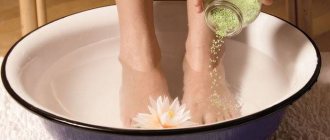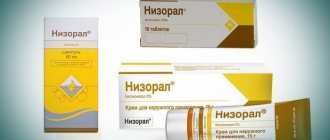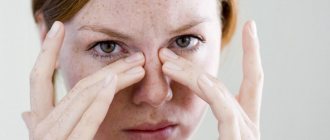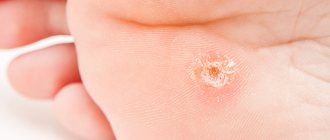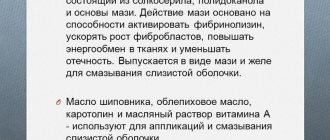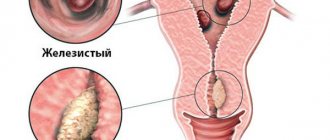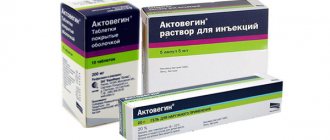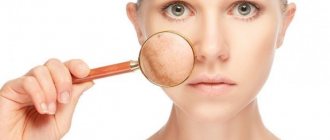Home » Traditional recipes
Folk recipes
Author Maria Khorolets Reading time: 8 min. Views 3.4k. Published 09.09.2015
Dry callus is a very common problem. As a rule, it occurs on the heel or sole of the foot, causing a lot of discomfort when walking. Many have learned to solve this problem in a very unconventional way, by placing special insoles in their shoes with a hole cut out for the callus or cotton wool. However, this does not eliminate the problem itself, but, on the contrary, strengthens it. Therefore, today we propose to talk about how you can use proven folk remedies to quickly and effectively get rid of any types of dry calluses, forgetting about constant discomfort.
- Types of dry calluses
- Treatment options
Herbal remedies
- Therapeutic baths for dry calluses with a rod
- Homemade ointments
- Other means
Types of dry callus
A callus on the foot can be: soft, hard or core.
Hard is a dense, closed growth that does not cause discomfort when walking. Mild pain can only be felt when pressing on the callus. Most often localized on the plantar and lateral surfaces of the feet, heels.
Soft is a seal on the skin with an open surface (similar to a wound) or in the form of a bubble with liquid inside. There is pain when you press it. Characteristic of interdigital spaces.
A callus with a core has a root that goes deep into the skin in the form of a cone. In its center there is a central translucent zone of increased density or a core of dry callus. Causes discomfort and pain when walking. Most often it forms on the toe: the lateral surface of 2–5 toes and the dorsal surface of the interphalangeal joints.
Vascular and fibrous are rarer types. With a vascular callus, there are blood vessels in the core part, while a fibrous callus is a very dense hyperkeratosis that looks like a honeycomb.
What types of ointments are there for calluses?
There are several types of ointments according to their intended purpose:
- products for the treatment of dry calluses ;
- means for the treatment of dropsy ;
- means for the treatment of core calluses .
Products for dry growths contain antiseptic and softening components. They allow you to make the top layer of skin looser, which makes it easier to remove the callus. When treating water calluses, antiseptic compounds are used, which, on the contrary, dry the skin, accelerating healing. Ointments for the treatment of calluses allow the callus to dry out and facilitate its removal.
Treatment
There is an opinion that if a callus does not cause pain, it does not need to be treated. However, this is not true: the aesthetic appearance of such feet is far from perfect, and the absence of pain and discomfort is not a guarantee that these symptoms will not appear in a month or two. All therapeutic methods are aimed at removing the dead layer of cells.
Drug treatment
Creams and ointments based on salicylic acid
Action: Regular use of such products leads to gradual burning of the growth from its bed. Salicylic ointment is applied to the callus after the bath, on dry skin, and a protective patch is glued on top. To prevent the drug from affecting surrounding tissues, a patch with a hole cut in it according to the size of the callus is glued to the skin. The procedure is repeated once or twice a day, the maximum duration of treatment is 28 days. You can use salicylic acid in a solution by moistening a piece of cotton wool with it and applying it to the site of the growth. The callus patch is applied and removed along with the keratinized dead tissue after some time.
| Salicylic ointment 3%, 5% or salicylic acid (solution) 20-30 rub. | Bottega Verde cream, 350 -450 rub. | “Stoletnik” heel cream for calluses and corns, price 80 rub. | Non-callus 70 rub. |
| Cream Namozol 911, price 110 rub. | Collomak, 300-370 rubles (pharmacy) | Pasta “5 days”, price 60 rub. (pharmacy) | Salipod patch 50-100 rubles (pharmacy) |
Creams and ointments based on lactic acid
Action: They soften the horny tissue, less aggressive in action than salicylic acids. Apply a thick layer to the callus (after a bath, on dry feet), cover the top with wax paper and put on woolen socks. After 2 hours, the softened skin is carefully scraped off with a special nail file, and the remaining cream is washed off with warm water. The procedure is repeated after 1-2 days.
| Super Anticorn, price 100 rub. | The effect of OJSC "Svoboda" (in Auchan) is effective against corns, 50 rubles. | Lactic acid solution | Green pharmacy (lactic and salicylic acid, plantain extract, etc.) 170 rub. |
Preparations based on celandine
Action: Celandine cleanses the skin of formations, decomposing horn cells. Use: The drug is applied after a steam bath with a plastic stick strictly to the callus area twice a day for 2–10 days in a row. The duration of cauterization is 10–12 minutes. Read more about the benefits and contraindications of celandine.
| Balm “Mountain Celandine”, 50-100 rubles. | Callus Ka, 70 rub. | Celandine juice | Stop callus with celandine, 80 rub. | |
Products based on sodium hydroxide
Action: This is an aggressive alkali that corrodes horn cells. The product is applied to the previously cleaned and steamed callus very carefully so as not to touch healthy skin. There is a special applicator for this. When applied correctly, the growth darkens, but there is no pain or burning. Over the course of 1-2 days, dead tissue gradually falls off. If necessary, repeat application of the product.
| Super Chistotolo, 30 rub. | Super Celandine 20-30 rub. | Super Celandine 20-30 rub. | Antipapillom gel, 130 rubles (pharmacy) |
Propellen-based products (refrigerants)
Action: This new word in pharmacology, otherwise called home cryotherapy, is more used for the treatment of warts, but is also used for dry growths - Wartner callus removal pen (500 rubles), CryoPharma (700 rubles). Use: A special applicator is applied to the area, the skin turns pale and a water bubble is formed, under which there is healthy tissue. The bubble dries up and gradually disappears.
Phenol-based products
Action: Cauterize and mummify the tissue - Kondilin (700 rubles), Vartek, Verrukatsid (220 rubles). Application: The corn is very carefully treated with a solution and dried in air. Gradually it dries out and disappears. If necessary, repeat the treatment.
Surgery
Removal of old dry callus, when other independent measures do not lead to an effect, is carried out in a cosmetology or surgical office:
- Liquid nitrogen or cryodestruction - A skin area treated with an applicator or a special device with liquid nitrogen, i.e. the callus itself is frozen for 20-30 seconds; if necessary, the procedure is repeated several times. After the procedure, the growth turns white and disappears after a few days. During the recovery period, it is very important to treat the skin with an antiseptic and protect the delicate skin under the former callus from friction with a bandage so that a new skin defect does not form.
- Laser - Exposure to a laser beam leads to heating and layer-by-layer evaporation of keratinized cells from the lesion. The recovery period for laser callus removal is shorter than after cryodexturction, however, after the procedure the same restrictive measures are required as described above.
Under no circumstances should you cut, excise, or peel the callus yourself. This is a direct path to infection of the soft tissues of the foot and ending up in the surgical department.
Types of ointments for calluses
There are quite a lot of products on the pharmaceutical market that are aimed at treating calluses. They differ in active ingredients, principle of action, and purpose.
Comparison table of ointments for the treatment of calluses
| Name of ointment | For which growths is it suitable? | Side effects |
| Super antimozolin | Dry | Skin irritation upon contact with healthy areas |
| Bensalitin | Dry, dropsy, core | Individual sensitivity to active components |
| Salicylic ointment | Dry, dropsy, core | Sensitivity to salicylic acid, feeling of dryness, allergic rashes |
| Levomycetin | Rod | Allergic reaction with individual sensitivity |
| Levomekol | Rod | Intolerance to the active components of the drug is manifested by a rash and burning sensation |
| Vishnevsky ointment | Dry, water, rod | Complicates the healing of skin lesions, allergic reactions, increased sensitivity to ultraviolet radiation |
| Pasta “5 days” | Dry | The appearance of pain or burning sensations due to hypersensitivity to the active components |
| Zinc ointment | Dry, rod and water | Individual sensitivity to the components of the product |
| Ichthyol ointment | Dry, water, rod | The appearance of an allergic rash with increased sensitivity |
| Vitaon | Dry, water, rod | Itching and skin rash due to individual intolerance |
Foot baths
They can act as both the main treatment and preparation before applying a medicinal drug. General principle of using baths:
- the water should be hot, but not scalding
- acceptance time – 15 minutes
- After the bath, the callus is carefully treated with a special nail file or pumice stone.
The following compositions can be used:
- A decoction of pine and spruce buds perfectly softens and disinfects the skin. Boil 1 tsp in 1 liter of water. kidneys for 2-3 minutes.
- Soap and soda solution - disinfects and softens horny seals. For 1 liter of water take 1 tbsp. spoon of soda and liquid soap.
- Potassium permanganate solution - prepare a saturated pink solution.
- Saline solution - add 1 tbsp to 1 liter of water. sea salt.
Precautionary measures
The main contraindication to the use of any product is individual intolerance and a tendency to allergic reactions . When applying ointments, you should adhere to the following precautions:
- do not apply to damaged skin;
- do not use on irritated areas;
- do not apply to the surface of mucous membranes;
- Do not use on dirty skin.
Following these measures will help minimize side effects from using ointments. And the correct selection of a drug for calluses helps to significantly alleviate the condition.
Folk remedies
How to get rid of dry calluses without surgery and pharmaceutical drugs? There are methods that have been proven over the years and are very effective when used correctly.
Onion peelThe husk is poured with 9% vinegar and placed in a jar with a lid for 2 weeks. Lubricate the area with Vaseline and place onion peels on it, apply a bandage on top and leave overnight. In the morning, the foot is steamed in water and part of the callus should already fall off. Repeat the procedure after 2 days until the growth is completely removed. | |
Garlic ointmentGarlic is baked in the oven, mixed half and half with butter and applied to the callus, covering the top with a bandage. After 2 hours, the ointment is removed with part of the growth. Repeat after 1-2 days. | |
Calendula flower compressHelps only with fresh calluses. Fresh flowers are crushed and hot water is added to them until a paste is formed, from which a compress is made. Repeat 10 days in a row. | |
Lemon peelFresh lemon peel is glued with the yellow side to the growth, after steaming the leg. Leave the bandage on for 1-2 days. Repeat after 2 days. | |
Propolis alcohol solutionHelps well with calluses on the little finger. A piece of propolis is dissolved in a small volume of alcohol and a third of the volume of salicylic acid is added and stirred until smooth. Apply daily and cover with a bandage. In 5-7 procedures, the growth will completely soften and disappear. | |
Pulp of fresh tomato of sour varietiesThe tomato is mashed into a pulp and applied as an ointment to the callus, with a bandage applied on top. This natural ointment can be used daily at night. | |
Egg1 egg is poured with vinegar and left for 8 days until completely dissolved. The resulting composition is treated as follows: soak a cloth napkin in liquid and apply it to the callus, cover it with cellophane and wrap it. Apply as parts of the growth fall off. | |
Aloe juiceAloe juice is applied every day at night until the horny formation is completely removed. | |
PrunesDried prunes are boiled in milk and applied hot to the area, kept until cool, removed and the next hot prune is applied. The procedure lasts 30 minutes and is repeated daily. | |
Celandine juiceThis is a classic method of treatment - every day the callus is cauterized with a freshly cut cutting of celandine. This method will clear your feet in a few weeks. | |
Garlic flatbreadGrind a clove of garlic into a pulp, add 1 tsp. vinegar essence and flour to obtain a flat cake. A hole is cut out in a piece of plaster according to the size of the callus, glued to the foot and a cake is placed in the hole. Cover the top with a bandage and seal it with a plaster. Remove after 2-3 days, the growth will be removed along with the bandage. If necessary, repeat after a few days, but 1 procedure is usually sufficient. |
Getting rid of
Traditional methods of treatment and drug therapy do not always effectively cope with dry growths. Sometimes its new localization is observed, especially with a fungal infection.
Laser therapy can permanently remove dry callus; it is the most reliable, safe method of control. The procedure does not allow for the possibility of injury or pain in the damaged areas.
The laser beam destroys the compaction, the root, and all infectious bacteria. Inflammatory processes are almost not observed, the recovery period is painless and quick.
The advantages of laser therapy include:
- Painless procedure under local anesthesia.
- The keratinization will disappear after one visit to a medical facility.
- The rehabilitation period does not require wearing bandages or using medications.
- The procedure is carried out quickly.
Laser treatment should not be used for people suffering from:
- Oncological diseases;
- Weak immunity;
- Diabetes;
- Pregnant and lactating women;
- For herpes on diseased areas of the skin.
Reviews
Tatyana, 35 years old, Saratov,
discovered Neutrogena cream completely by accident. It perfectly softens the coarsest corns and takes care of them in 3-4 days. Now, after buying new shoes, I use it for prevention. I rub Neutrogena on my feet and no calluses appear. I bought the same hand cream for my child. She started playing tennis, and her racket often gives her blisters.
Galina, 47 years old, Krasnoyarsk
I will leave a review about Levomekol ointment, which I used for inflammation of the callus. I applied it in the morning, and by evening the heel stopped hurting unbearably. The ointment removed inflammation and severe swelling and helped the wound heal quickly.
Why is it important to take care of your feet?
In the summer, many people like to show off in open sandals, but this is not always possible, since their feet are neglected. Corns, cracks, and calluses not only detract from the beauty of your feet, but also change your gait.
Until your feet are healed, it is better to wear closed shoes or socks to avoid infection in the cracks of your feet. Otherwise, you can then get not only calluses, but also fungus, dyshidrosis and other problems.
Don't forget that your feet feel cared for, so take a shower every day, use foot scrubs or pumice stones. After this, apply the cream. With daily care, there will be significantly fewer calluses, because the epidermis will be well moisturized.
Similar article - Swelling of the legs - causes and treatment methods
Reasons for appearance
Most often, the main reason for the appearance is tight dress shoes that have not been worn in. However, it is not the only problem that can cause lameness. Some people, without hesitation, put on thin tights or even boots on their bare feet, without in any way protecting the delicate areas of the skin where friction can occur. Older people have another problem - dry calluses.
They are formed from untreated wet ones, and the result is a growth on the skin, which hardens over time, also causing severe pain. Such calluses can even change a person’s gait, as they interfere with walking.
Keratolytic drugs
In the name of the drug “keratolytic ointment for calluses,” the first word can be confusing, since it is present on some packages, but not on others. In fact, this name is a confirmation of the effectiveness of the ointment, as it clarifies the features of its use and medical action. After applying to the callus, the ointment begins to dissolve the keratinized cells of the epidermis. Keratolytic medications include special biologically active substances - keratolytics. And they are the above-mentioned salicylic and lactic acids, resorcinol, urea and others.
The quantitative composition of keratolics present in the ointment may vary depending on the name of the drug. It is not worth drawing conclusions about the lack of effectiveness of this group of drugs after using a single ointment.
To dissolve the keratinized areas of the callus, depending on its neglect, a certain concentration of keratolic in it is required. If it is insufficient, then the process is limited only to the dissolution and exfoliation of the upper layers of keratinized corneocytes.
Why do calluses appear?
Calluses appear due to:
- poorly chosen shoes - poorly supported by the foot, pressing in certain areas;
- wearing high-heeled shoes for a long time;
- incorrect positioning of the foot while walking;
- long standing position;
- sports activities.
The occurrence of calluses is observed more often in people of mature age, this is due to the thinning of the skin against the background of age-related changes in the body. The skin is damaged on the growing bone of the big toe (bump on the side) as there is no natural cushioning.
There are also so-called symptomatic calluses, for example, with bursitis - a damaged joint of the thumb with curvature and protrusion.
Composition of Salicylic ointment
The effective use of corn ointment called “Salicylic” is based on its composition. So, the main component of such an anti-callus remedy is willow bark extract or simply contains salicylic acid. Today, acid is extracted industrially. Previously, it was willow extract that played an active role in the composition of the drug. It has a disinfecting, antibacterial and softening effect on the crusts of dry growths. In addition, it is Salicylic ointment that perfectly stimulates skin regeneration processes, forcing it to renew itself more quickly. At the same time, using the drug in a course allows you to dissolve even the most hardened corns, actively penetrating into the deep layers of rough skin.
Composition and instructions for use of Sebozol shampoo
Salicylic ointment is classified according to the level of concentration of the active substance in it. So, there are 2%, 5%, 10% drugs on sale. To effectively remove dry calluses, it is better to use 5% or 10% ointment.
Important: it is not recommended to use salicylic ointment for calluses in combination with other external ointments. In this case, the effectiveness of the drug will be reduced. As for storage conditions and shelf life, the drug is stored at temperatures from +5 to +25 degrees for no more than 3 years from the date of release.
The Best Pencils to Prevent Calluses
Any calluses are formed as a result of friction between shoes and delicate skin; this happens due to too hard inserts in the last structure or due to the wrong size, mainly small shoes or boots. To prevent the formation of blisters and corns, it is necessary to minimize or eliminate chafing of the epidermis in advance. If it is not possible to avoid uncomfortable shoes or there is no way to artificially stretch the skin or leatherette in problem areas, special pencils come to the rescue, leaving a layer of lubricant on the epidermis. Note that a pencil is not a panacea: if the style is chosen completely incorrectly or the size does not suit your foot at all, chafing cannot always be avoided.
Compeed Anti-Callus Pencil
Rating: 4.9
A pencil from the Spanish company Compeed is recognized as the most effective way to prevent the formation of calluses. The consistency is greasy, the substance forms a layer of lubricant to prevent friction of the skin of the heels and feet against the internal parts of the shoe last. The stick formula not only prevents friction, but also cares for, softens the epidermis, has a natural color, and is therefore completely invisible.
Most reviews of the Compeed pencil are positive; it can indeed prevent the formation of calluses, but it does not guarantee the integrity of the skin under extreme pressure and friction. The cost of the product is about 500 rubles.
Advantages
- Effective protection against wet calluses;
- Does not smell, does not leave greasy marks;
- Softens the skin;
- Stick 8 gr. enough for the season.
Flaws
- In the summer season it sells out of stores and pharmacies like hot cakes;
- The price is relatively high.
Anti-callus protective pencil for women Salton Feet Only
Rating: 4.8
The Salton feet only pencil received second place in the rating for its high efficiency - it perfectly protects the skin from the formation of water calluses, and is useful for constant friction of individual parts of the shoe on the skin. Natural plant extracts and oils make the composition especially valuable: plantain and panthenol heal, shea butter, wax and vitamin C soothe, nourish and protect the skin. The softening effect is felt instantly: the lubricant immediately removes friction from the pressure of the heel when walking, the skin becomes less sensitive to hard shoes.
The Salton feet only pencil did not become a leader in the category due to its less lasting effect - the layer must be regularly updated. But the cost of the stick is only 250 rubles - 2 times cheaper than its Spanish counterpart.
Advantages
- Protects against chafing of the skin of the heels and lateral pads of the feet;
- Relieves inflammation, irritation, cares for the skin;
- Affordable price;
- Large volume 14 ml.
Flaws
- It is necessary to update the application layer.
Protective anti-callus pencil Sticky
Rating: 4.7
The rating is completed by the most inexpensive (about 110 rubles) and small (4.5 g) pencil for protecting against calluses, Sticky. It is suitable for infrequent use due to the compact size of the stick, as well as its not the highest efficiency - it only temporarily removes the friction of shoes on the skin. Sticky pencil is sold in pharmacies.
Advantages
- Compact stick size (only 4.5 g);
- Instant action lubricant;
- Low price in the category of anti-callus pencils.
The best anti-callus patches
The simplest remedy for healing calluses and reducing pain symptoms is special patches. Unlike conventional medical and bactericidal tapes, they are impregnated with a complex of acids that have a healing effect on blistering. Plasters are used primarily for the healing of water calluses.
Compid patch for wet calluses on feet
Rating: 4.9
The first patch in the ranking from Johnson & Johnson is the widely advertised and sought-after Compeed, which has a preventive and therapeutic effect. The line includes tapes for dry and water calluses; they are effective at every stage of the formation of a skin defect. So, if rubbing is just beginning to occur on the heel and discomfort is felt, the glued Compid patch will prevent a bubble from forming, taking on the force of friction and at the same time relieving inflammation. This way the foot gets used to the new shoes faster. There are special patches for each area of the body: for the heels, between the toes, universal - they are distinguished by the shape of strips of woven hypoallergenic material of flesh color, which stick to the skin tightly and for a long time, then are removed without pain.
Compeed patches belong to the group of medical products.
The average price of a set of plasters is about 340...350 rubles.
Advantages
- Prevents the growth and development of calluses;
- They have a healing effect and a bactericidal effect;
- A wide range of plasters for different types of calluses on every area of the skin.
Flaws
- High price.
Callus adhesive plaster Cosmos Hydro-Act for wet calluses
Rating: 4.8
The Cosmos Hydro-Act No. 5 patch is designed for the prevention and treatment of water blisters-calluses on the feet and fingers. The uniqueness of the action is to accelerate the natural process of tissue regeneration and create a soft pad from the absorbed callus secretion to protect against the penetration of bacteria and relieve pain symptoms. The patch is made of elastic woven material in a color close to the skin tone, so it is almost invisible on the body, and is also very durable - lasts up to 4 days, which, by the way, is favorable: the formed environment “preserves” the wound, providing favorable conditions for skin restoration and healing hearth.
The cost of a package of 5 strips is about 300 rubles.
Advantages
- Bactericidal and healing effect;
- Relieving pain;
- Creates a natural environment for skin regeneration;
- Stays on the skin for several days.
Flaws
- High price;
- Can only be used on treated and disinfected calluses.
Salicylic patch LEIKO
Rating: 4.7
The LEIKO patch, which took third position in the rating, is designed to heal dry and ingrown calluses. Salicylic acid, which is impregnated with the treatment tape, softens dead skin and exfoliates dead epidermis, at the same time disinfects the wound and minimizes discomfort. A plastic membrane is filled with acid, which does not allow the active substance to spread over healthy skin. The patch is made of cotton with an adhesive layer of rubber resin and zinc oxide. Strips measuring 2x7 cm are packed in separate sealed envelopes. You can buy a set of LEIKO patches relatively inexpensively - for only 80 rubles due to the low cost of the components.
Advantages
- Softens and regenerates rough skin, dry and ingrown calluses;
- Disinfects the surface of the skin, which is important for spines;
- Stays on the skin for a day;
- Resistant to water;
- Low price.
Flaws
- The patch is colored, visible on the body;
- Strips are not equally convenient for all areas of the body.
How to properly treat a wet callus
The choice of treatment method for a callus depends on its type.
If the rubbing process is at the initial stage and a small bubble of liquid appears, then it goes away on its own. It should be covered with a band-aid and avoid wearing shoes that caused the skin to rub. When the callus is already large, special care is required. Expert opinion
Sakania Luiza Ruslanovna
Dermatovenerologist, cosmetologist, trichologist
Ask a Question
This is due to the fact that when the bladder ruptures there is a risk of infection, which can cause various complications. Staphylococci and streptococci can get into the wound, which cause inflammation and suppuration.
To avoid this, you need to do the following:
- treat the entire rubbed area and callus with iodine or brilliant green;
- treat the needle with alcohol: either a regular sewing pin or a pin will do;
- the bubble with exudate must be pierced parallel to the surface of the epidermis, on the side of the callus: it is impossible to puncture perpendicularly, as it can damage the bare areas of skin under the bubble;
- In order for the liquid to come out better, you need to make several punctures;
- the walls of the bladder should remain intact and not rupture, this will help protect the lower layer of the dermis;
- after performing the puncture, the rubbing area should be treated with a sterile napkin, pressing it lightly to remove all exudate;
- After completing all the steps, the surface is treated with peroxide or furatsilin and a small layer of ointment with an antibacterial effect is applied, a small piece of a bow is applied on top and an adhesive plaster is stuck on.
This type of shoe callus heals quickly, without any negative consequences.
Hardware pedicure
If you managed to achieve only a negative result with self-treatment, you should resort to the services of specialists .
, a hardware pedicure is most often used . The number of procedures is determined by a podiatrist on an individual basis, on average one per month.
After treating the feet with a disinfectant composition, the master grinds the corns using a coarse or fine-grained drill (disposable attachment) installed on the device, then apply lotion and moisturizer.
Hardware procedures also include drilling out a callus with a rod. When carried out in a clinic, infections are excluded and there is no pain. The drugs used during the procedure have antifungal, disinfectant and wound-healing properties.
After a hardware pedicure, self-care is recommended with regular application of a nourishing, moisturizing cream, a bath with sea salt or herbs, and compliance with hygiene standards for foot care.
What to remember when using an anti-callus product
To get beautiful and well-groomed skin on your feet, it’s not enough to just buy a cream and haphazardly apply it to your feet, expecting improvement the next day. To prevent roughness on your heels and feet, you must adhere to the following recommendations:
- Before using any antibiotic ointment, you should consult your doctor.
- Use ointments or creams against calluses on the heels only on steamed skin to achieve the best effect.
- If a person has an advanced case, the callus on the fingers and heels is old and rough, it is recommended to wear additional warm socks after applying the cream or ointment. This way the patient will achieve the necessary therapeutic effect and be able to heal his legs.
- Remember, advertising about a “cheap and unique” cream for heel calluses is often deceptive.
Only a proven remedy against calluses and corns on the fingers helps maintain healthy feet.
Procedures
Doctors do not advise treating a dry formation with a rod on your own, so as not to introduce a fungal infectious disease. Remedies and folk recipes cannot always cope with the disease. Then the callus begins to hurt, become inflamed, and fester.
Specialists can effectively deal with this problem. They present hardware methods of combating dry calluses on the feet and toes.
Drilling out the callus formation is done with a frieze. Gently, without damaging healthy tissue, the frieze destroys the growth and eliminates the rod. After a hardware pedicure, an antiviral ointment is applied to the wound.
The laser is able to cure the most advanced, long-standing rod formations on the legs. It completely burns the root, destroying associated infectious bacteria. The likelihood of inflammation or new relapses is minimal.
Cryotherapy is a treatment with nitrogen. This substance helps in thirty seconds the rapid exfoliation of rough, keratinized tissue.
Electrocoagulation destroys keratinized skin using electrical currents tuned to different frequencies.
If the dry callus is large in size and damages neighboring tissues, then the specialist will prescribe surgical excision.
Cosmetological, professional procedures used to eliminate dry calluses are quite effective. They allow you to solve the problem presented in just one session.
Is it permissible to be treated with iodine and brilliant green?
Iodine is included in selected folk remedies for the treatment of callus. If you find puffy calluses on your fingers or heels, simply spread iodine on the callus overnight. By morning the person will stop feeling pain and the callus will go away.
It is permissible to use iodine or brilliant green if you want to pierce a water callus. The puncture is performed in emergency cases! The products are used to disinfect needles and callus puncture sites. In other cases, using green paint is not recommended. If the wet callus has ruptured, the product should not be used, avoiding the chance of further increasing skin irritation.
How to use
Since the areas of application of anti-corn agents differ, the methods of their use also differ. Some of them contain caustic substances, so healthy skin needs protection. Such gels or creams are applied pointwise to the callus, rubbing in with a cotton swab. Manufacturers even recommend pre-sticking an adhesive plaster with a hole cut out.
Treating minor skin damage is much easier. For example, for mildly expressed corns, it is enough to lubricate them with cream 1-3 times a day. They gradually dissolve, decrease in size, and disappear.
If the callus is not wet, then preliminary steaming is recommended, including in infusions of medicinal herbs. Then the roughened area of skin needs to be dried and, if possible, treated with a scraper or file.
Before using the anti-callus product, it is advisable to steam your feet.
Indications for use
Anti-callus ointments are recommended for the treatment of any calluses.
To quickly obtain the desired result, you need to select a drug depending on the type of injury.
There are several types of calluses in their structure:
- Wet - arise due to the detachment of the upper layer of the epidermis with the formation of blisters filled with liquid. Medicines used in the treatment of such calluses have an antiseptic and healing effect.
- Dry ones are the result of an increase in the stratum corneum of the skin - hyperkeratosis, therefore ointments should soften compacted areas for the purpose of their subsequent removal. Corns appear on the sides of the sole, on the heels, and on the pads under the toes.
- Callus often forms on the feet due to prolonged pressure and friction on the skin. It differs from dry ones in the presence of a taproot that goes deep into the dermis. In this case, ointments are effective only at the initial stage.
Before the first use, the drug is tested for the absence of allergies. The skin is lubricated with a small amount of the product. If hyperemia, edema, and urticaria do not appear within 24 hours, the medicine is used for treatment. Benefits of ointments:
- Availability. Almost any external remedy is available in pharmacies without a prescription.
- External use. The active ingredients are not absorbed into the general bloodstream, therefore they are prescribed to pregnant, lactating women and children.
- The medicinal substance directly affects the pathological focus.
- Easy to use at home.
Popular gels
Callus products are more concentrated than ointments and creams, dry faster and are absorbed without residue or greasy residue. To facilitate application, such products are usually available with a dispenser or in the form of a pencil.
The most commonly used gels are:
- Wartner . Accelerates the healing process of dry formations. Apply with a special spatula once a day. This should be done carefully so that the composition does not get on healthy tissue. After four days, the stratum corneum of the skin will peel off. Price - from 515 rubles.
- ProtoKeratin is a gel with a keratolytic effect, highly effective, has a delicate texture and a good smell. The product not only gets rid of corns, but also prevents the formation of new ones, as it makes the skin elastic and soft. Contains urea, potassium hydroxide and plant extracts (aloe, chamomile, nettle). Available in volumes of 110 ml (350 rubles) and 250 ml (27 rubles). Available in volumes of 110 ml (350 rubles) and 250 ml (27 rubles).
- Callus Remover from Arabia . The alkaline environment of the gel promotes gentle treatment of wounds and complete exfoliation of keratinized tissue. Chamomile extract penetrates deep into the dermis and has a regenerating and antiseptic effect. The product has proven itself well among pedicurists, which confirms its effectiveness. You need to wear gloves when working with the product, and apply it pointwise. The product is sold in a 100 ml bottle with a dispenser. The minimum price is 665 rubles.
- Compact applicator in the form of a Wartner pen . The gel contains trichloroacetic acid, which loosens dead tissue well. It will take very little time to get rid of dry formations. Since the drug is very concentrated, it is consumed minimally. It should be used carefully and strictly adhere to the dosage. If applied correctly, results can be seen within three days. The cost of the pen starts from 535 rubles.
- Solomeya is a professional gel for removing corns and calluses. Contains moisturizing agents and plant extracts. Quickly and deeply penetrates the keratinized epithelium without affecting healthy cells. With regular use, you can forever forget about cracks, dry feet and growths. Directions for use: steam your feet, apply gel locally, cover with plastic and wait 7 minutes. Then rinse and treat the skin with a hard file. It costs about a hundred rubles.
Advantages and disadvantages
Many readers are interested not only in the effectiveness of the drug in the treatment of corns, but also in some of its other benefits. Regarding Salicylic ointment, the advantages of its use are as follows:
- Availability of the product in Russian pharmacies and its dispensing without a prescription;
- Acceptable cost of the drug (about 0.30 USD);
- High efficiency of the drug;
- Possibility to use the product in any container (glass jar or tube).
Some disadvantages of Salicylic ointment include:
- The need for extreme caution when applying the product to the skin of the callus to avoid burning healthy tissue;
- Relatively low effectiveness of the drug in severely advanced cases;
- The risk of side effects such as allergies in a small percentage of patients;
Important: the use of Salicylic ointment during pregnancy is not recommended or only with the permission of the attending physician or obstetrician-gynecologist.
